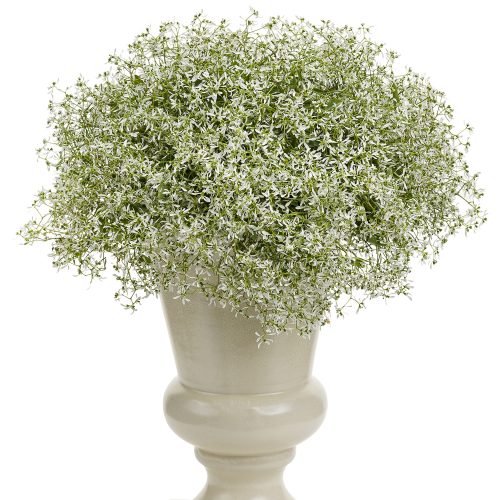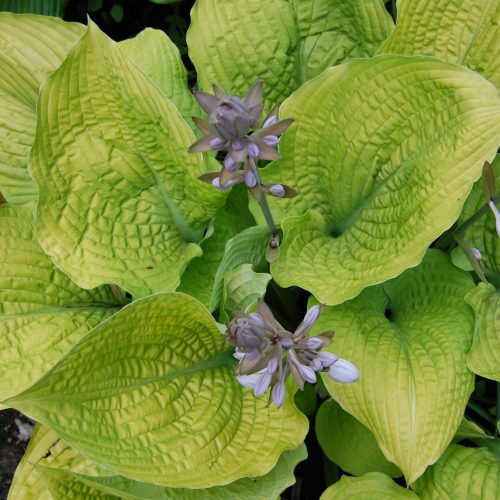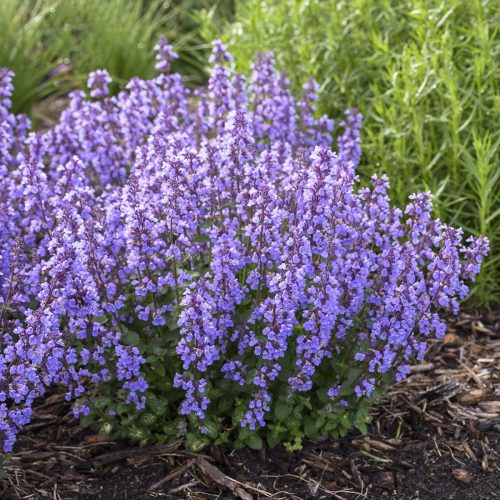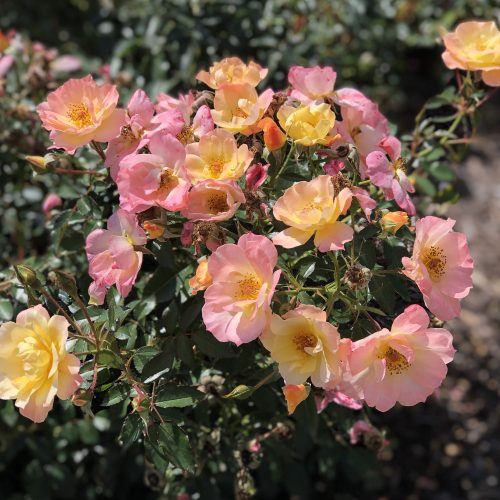As a confessed plant lover, I want them all—every beautiful plant I see at the garden center wants desperately to come home with me and I am happy to accommodate. That is, until I run out of room in my garden. To have ten acres of open land and an unlimited budget to collect all my favorites would be a dream!
I’ll bet you don’t have unlimited space or funds either, so I’m going to help narrow things down a bit for you. Let me tell you about five award-winning plants that deserve a spot in everyone’s garden. Because when you can’t have them all, you should have the best.


Named Proven Winners’ 2020 Annual of the Year, these sparkling white euphorbias are essential for all kinds of container plantings and can be effective in the landscape, too. Think of them like baby’s breath in a cut flower bouquet—they knit together the composition and give it a polished look.
Diamond euphorbias have teensy white flowers that appear like a cloud of white on wispy stems from planting time until a hard freeze. Though they may appear delicate, they are actually very tough plants that tolerate heat, drought, and blazing sun to mostly shade, and also fend off critter damage well. Surprisingly, pollinating bees find a way to extract sweet nectar from the tiny flowers.
There are several sizes of Diamond euphorbia available, from the tightly mounded Diamond Snow to the airier Diamond Frost. As its name implies, Diamond Mountain is the largest of the group and the best for landscape use. Once you find one you like best, you’ll want to grow it every year.

If it were up to me, I’d give every variety in the Tuff Stuff® series an award! These are some of the most reliable and truly breathtaking hydrangeas in my garden. This year, Tuff Stuff Ah-Ha is the well-deserved winner of the Hydrangea of the Year award.
What’s so great about mountain hydrangeas? Hardiness. This species of hydrangea is native to the mountains of Japan where late spring freezes are common, thus they are adapted to have extra hardy buds and stems. When you grow mountain hydrangeas, you’ll notice that the tips of the stems—which carry the largest flower buds—don’t die back over the winter. That helps them bloom reliably every year in early summer. Since they are rebloomers, you’ll also enjoy a repeat show throughout the summer and early fall.
Tuff Stuff Ah-Ha produces exquisite lacecap blossoms with very large, double florets. Fertile flowers in the center of each cluster are a treat for visiting pollinators. Though they tend to bloom light blue, the flowers will be pinker in alkaline soil. Expect this hydrangea to grow 2-3’ tall and wide. It is hardy in zones 5-9 and likes full sun to part shade conditions.

A perfect companion for Tuff Stuff Ah-Ha hydrangea in part shade is this brilliant yellow hosta which was named the Hosta of the Year for 2020. Since both grow about the same size, plant them side by side in your landscape, perhaps with ‘Coast to Coast’ flanking either side of the hydrangea. The hosta’s long- lasting citron coloring plays beautifully against the dark green foliage and pastel blossoms of Tuff Stuff Ah-Ha.
Over time, ‘Coast to Coast’ matures into a 28-30” tall, upright vase-shaped hosta with thick, puckered leaves. Its broad texture complements shade loving companion ferns, foamflowers and sedges. Lavender flowers appear on 3’ tall scapes in midsummer, attracting pollinating bees and hummingbirds. Hostas are hardy in zones 3-9 and grow in partial to full shade. See more hostas we offer here.

‘Cat’s Pajamas’ is a relatively new variety of catmint that has experienced incredible popularity since its inception. As we watched it in trials before it was introduced, we knew it would eventually become an award-winner. It was just THAT good! Now, it has been named Proven Winners’ 2021 Perennial of the Year.
‘Cat’s Pajamas’ is a dwarf version of the equally amazing but larger ‘Cat’s Meow’ catmint. It forms a dense 12-14” ball of fragrant grey-green foliage that becomes nearly encapsulated in bright periwinkle blue flowers. The first set of blooms happens in early summer a few weeks earlier than most catmints. Once they are spent, give the whole plant a light shearing to remove the spent blooms and then watch it bounce back into flower again in the summer. By repeating this process a time or two, you’ll have blooms all the way to fall.
Catmint needs full sun to grow and bloom, so be sure to pick a spot that sees sun all day or a minimum of 6 hours per day. It grows better if the soil is on the dry side and is NOT enriched with compost or other rich amendments. ‘Cat’s Pajamas’ looks fantastic planted in a row as a short hedge, such as around the perimeter of your vegetable garden where it will help to draw in pollinators. It is hardy in zones 3-8.

This gorgeous landscape rose has racked up several awards in its lifetime, the most recent of which is Proven Winners’ 2021 Rose of the Year award. Like the popular ‘Peace’ hybrid tea rose in coloration, this easy to grow, disease resistant landscape rose has long been a crowd pleaser.
Watch as its bright peachy orange buds open to reveal soft buttery yellow blossoms that blush pink as they age. You’ll often see all three colors present at once. Dark green, glossy foliage creates a perfect contrast to the light blossoms.
This rose typically grows a bit wider than it is tall, averaging 18-30” in size. Not much pruning will be needed to keep it growing well. If the tips of the branches die back over the winter, they can be pruned in spring just as the new growth begins to emerge. At the same time, feed with a granular rose food like Espoma’s Rose-Tone. Oso Easy Italian Ice rose is hardy in zones 4-9 and requires full sun. Browse more Oso Easy® roses here.

2 thoughts on “5 Award Winning Plants Everyone Should Grow”
I have three tuff stuff red mountain hydrangeas. All three die back to the ground during winter. I am zone 5b. I thought they were too exposed so I moved them last year to a more protected spot. Same die back. They do grow but remain very small. What am I doing wrong?
In zone 5 they may die back each year to the ground. You may have some buds at the tips of the stems that will result in flowers.